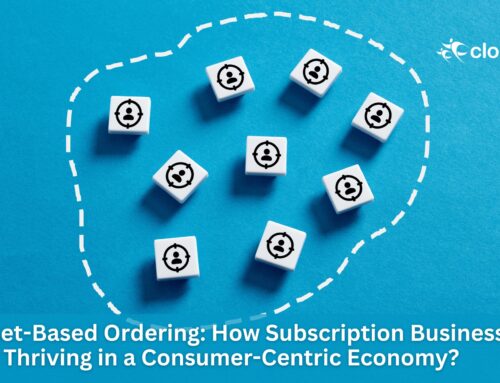2020 brought in never-anticipated disruptions in personal and professional life. After a year and a half of the volatile year, as of June 2021, the work trends seem to settle – albeit in a new dimension. At this juncture when companies are drafting strategies for hybrid work, here are the trends experts believe would decide the future of the work.
Table of Contents
Productivity matters, and not timings or location
Companies were sceptical about productivity when they had to shift to the work from home model abruptly. Studies revealed that this trend had differing outcomes.
- Gartner’s 2020 ReimagineHR Employee Survey finds that only 36% of employees were productive while working from home.
- On the other hand, companies that offered flexibility for employees with work from anywhere with no count on working hours found that 55% of their workforce was productive than expected.
Thus, experts predict that, in the future, companies might gauge employees by their productivity rather than the number of hours.
An exacerbation in the gender pay gap
The Heads of HR departments in the companies that already started working hybrid observed that more men are tending to return to a full-time office. Women are inclining to work from home for various reasons.
Women in the workforce are preferring to care for their families in person. The reasons for this seem to be many – the closure of child care centres, the continuation of schools in online mode, no clarity on the vaccination for children in addition to the pronounced increase in the mutations – seem to be a few.
Fortunately, employers today are more empathetic than in pre-pandemic times. Leading organizations are already offering benefits for women working from home. They are increasing the focus on their mental health and wellness besides attracting the women workforce to the full-time office by providing subsidized and sponsored day care amenities.
There are arguments that women fear that they might fall back during appraisals and promotions. Experts also fear that this trend might still exacerbate the already existing gender pay gap.
Negating such fears, studies stress that full-time remote workers are 5% more likely to be high performers.
On a positive note, studies find that gender pay equity laws are on the horizon. And they also point that it is high time employers work towards filling the gap proactively before related laws are made and imposed on the companies.
Increased contract hiring to fill the talent gap
The upswing of digital transformation already created a dearth of talent. With the pandemic-induced changes, employees are shifting to more empathetic employers even at low pay and preferring to work from their comfortable location. Such trends might make it challenging to find talent easily.
Studies indicate that companies have two paths to fill the talent crunch: first, upskill their employees and motivate them towards better productivity. Second, leverage the contract hiring and gig workforce to make sure business runs without the hiring hassles.
Focus on employees’ mental health
The Zoom screens erased the thin line between the personal and professional lives of employees. Bosses and managers today have a closer look at the life of employees. They are clearer how employees are mentally and personally struggling to balance the work and families.
As a result, companies now are giving equal focus to employee’s mental wellness. Gartner’s 2020 ReimagineHR Employee Survey finds that employees are happier and display better productivity with employers that cared for their mental health.
Thus, future work trends indicate that employers may focus more on employee wellness sessions and programs to ensure they enjoy better mental and physical health.

Companies’ involvement in social and political issues
CEOs making statements about corporate and social responsibility seems to no longer sufficient to attract and retain talent. Candidates are keener to associate with companies that spend on social causes.
Gartner finds that employees love it when their employers actively participate and associate with social and political concerns.
Interestingly, in organizations that spend resources on social causes, employees are more content and productive.
Regulations on employee monitoring
The employee monitoring software witnessed a spike during the pandemic. Though employees were aware of being monitored, they never had an idea what data has been under the eye.
With the rise in hybrid work trends, experts believe that the employee monitoring trend will continue. They also predict an introduction of new state regulations related to the same that may benefit employees.
Inclusion rich and diverse workforce
One of the most welcoming and unanticipated workforce trends that pandemic rushed in was reverse discrimination. With jobs turning global and remote, the workforce now is rich in diversity, thanks to varied employees joining/re-joining jobs.
Studies find that the future workforce shall be diverse, thus erasing the age, religion, ethnicity and national origin, and disability restrictions.
Companies have been both winners and losers
As with every economic disruption, the COIVD-19 pandemic also left both winners and losers among organizations. Many companies had to bid adieu unable to bear the losses and adapt to the gushing changes.
On the contrary, organizations working now enjoy the cost benefits due to reduced real estate, infrastructure, and amenities provided to the employees.
Thus, the hybrid model, which will be the nearest future, may help companies in savings in many ways.
Creative ways for employee engagement and retention
Employers are coming up with creative ways to retain and motivate employees. Incentivizing productivity, offering mental health leaves, encouraging vacations, and sponsoring their learning and wellness programs are some approaches companies can include in their employee retention and motivation strategy.
States might attract employees more than organizations
Historically, it was companies that states always attracted with their tax incentives. Now with more freedom for employees to choose their place of work, the trend might change. Market experts predict that the attention of the state might now drift towards employees. States may form new rules and tax incentives that pull in more employees to work from their location.
Wrapping it up
The observations discussed above indicate that at the end of the day both the employees and employers win. While employees can enjoy more flexibility, there has never been a better time to keep up their productivity levels. On the other hand, employers might have to invest in newer policies to attract and retain their top talent.
Are you building a future-ready workforce? Let Cloudely help you with hiring to find the talent that you deserve. Reach us at hello@cloudely.com to more about our staffing proficiency. Connect with us on LinkedIn to receive our latest updates.






